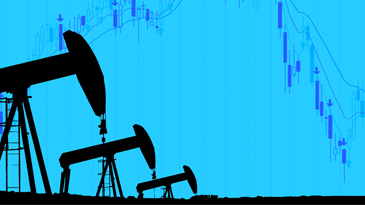CERAWeek 2018 took place last week in Houston, drawing some 4,000 energy industry influencers from around the world. Once again, CERAWeek was an excellent venue to meet with government and company leaders representing a range of experiences and perspectives across the energy industry sectors. The IHS Markit and CERAWeek team did a great job bringing forward numerous timely and important topics, along with a roster of global thought leaders, reminding us how much has changed over the last 10 years.
There are a few key points that stuck with me as I left the event.
First, this is an important time and a true inflection point for industry. We are at a tipping point. Since attending my first CERAWeek in 2008, the volume of data being collected within our customers’ businesses has increased exponentially, and the insights that can be derived from it are now enabled by high-performance computing and cloud technologies. This convergence of technologies is making analysis and predicting outcomes around complex problems a reality in a way that conventional engineering, operations and maintenance technologies have not been able to in the past.
The energy industry is no stranger to data. Virtually every oil, gas and petrochemical enterprise has been pursuing digitalization for decades. Unfortunately, 95 percent of the value in the data is not captured today. This is now changing with increased focused on digital technologies. At CERAWeek you could see the ever-increasing opportunities to invest in digitalization, as amply demonstrated by the many companies and sessions at the Innovation Agora focusing on big data, analytics, cybersecurity, drones and other technologies that constitute the digitalization and Industry 4.0 initiative. The key to benefiting from digital transformation is to select those areas of investment that create the most value and enable sustained operational excellence.
This brings me to my second point — the influence disruptive technologies are having on the upstream oil business — which was the focus of the plenary I participated in along with a number of industry leaders. The plenary discussion reminded me of when notable digital entrepreneur Marc Andreessen changed business mindsets with his observation that "software is eating the world."
Energy companies have turned to operational analytics and machine learning software to solve problems that might not have been solved before to remain profitable even in a low-oil-price environment. A typical AspenTech machine learning pilot project involves 22 million sensor values, and can identify and predict the root cause of failures in as little as 2 ½ weeks — unachievable until recently, and just the start of innovations to come. However, the real prize of digital transformation is operational excellence.
This leads me to my last point. Many companies speak well about the value and benefits of advanced analytics and machine learning. By recent count, there are some 850 analytics companies doing business today, with some making strong promises about the value they can deliver through these technologies. However, as much as technology is an enabler, the domain expertise and process knowledge needed to be truly successful with any new technology — let alone predictive analytics — cannot be understated.
Context is critical to understanding the insights from these large volumes of data through the increasingly powerful analytics available. Let’s be clear: technical and business context is key. The value in asset optimization is captured by targeting the performance improvement potential of digitalization to specific operational excellence objectives.
Results from a recent AspenTech survey show that 72 percent of our upstream, midstream and downstream customers believe that maximizing uptime or improving reliability is the top benefit seen from analytics. Implementing these technologies supported by organizational excellence — meaning the alignment of talented, experienced professionals with the most critical needs of the business through coherent and effective processes — is the difference between success and failure.
Coming back to the digital transformation and disruption themes at CERAWeek, we are seeing a culture change in the upstream industry. The relentless focus on maximizing profitability that has existed in refining has permeated the upstream industry and is leading to the operational excellence that underpins top performers. Oil companies are increasingly being led by CEOs who came out of the refining part of the business, demonstrating the emphasis on operational excellence and profit maximization.
Industry stalwarts have always operated under strict safety and environmental regulations and with challenging business goals, which is why they have focused on operational excellence initiatives to meet and achieve these goals. Today, we are seeing organizational excellence underpinning operational excellence initiatives. This focus on people and the organization will leave a lasting impact on the industry in the years ahead, and companies that focus on both areas across the entire asset lifecycle will achieve the highest returns.
After spending last week immersed in these issues, I’m looking forward to future editions of CERAWeek and continuing to serve our industries during this important time.
To learn more about how companies are leveraging modern technology to drive operational and organizational excellence — and boost profitability — please read my recent executive brief: The Time is Right for Optimum Reliability: Capital-Intensive Industries and Asset Performance Management.






Leave A Comment